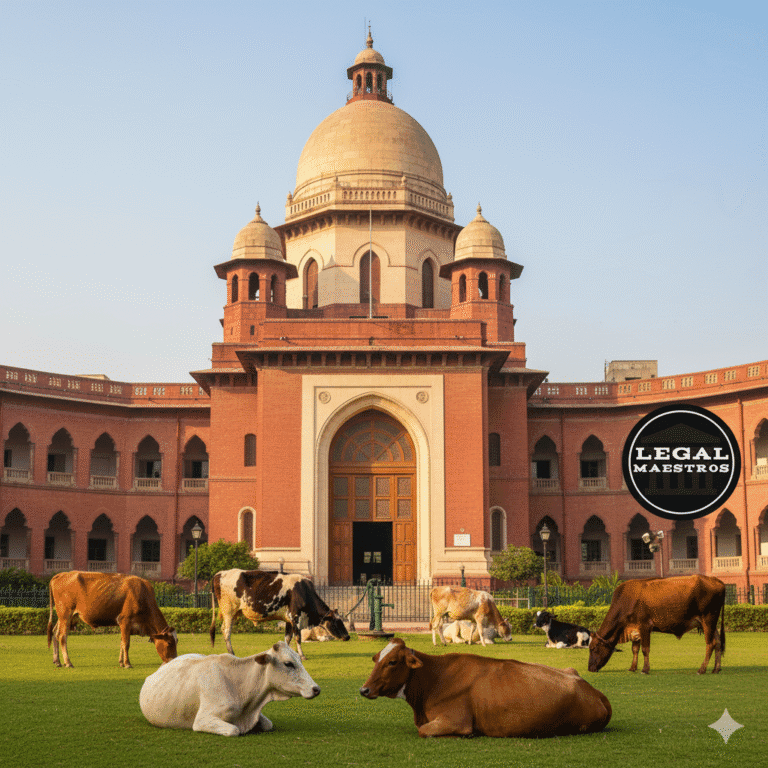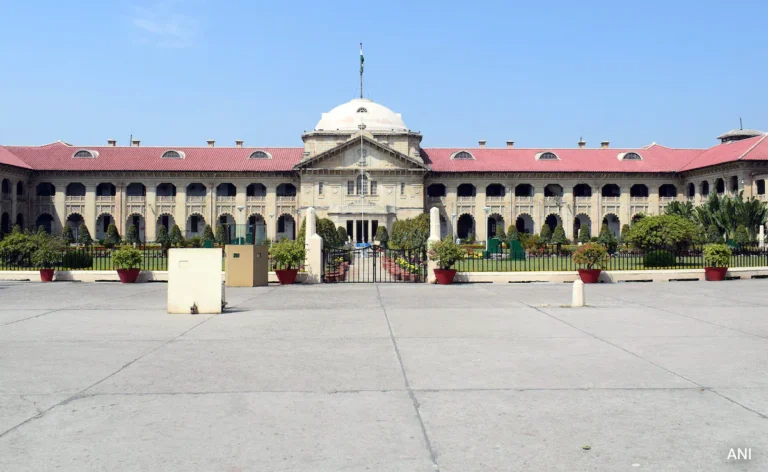
Kerala HC Pauses Govt’s Stray Dog Euthanasia Order, Highlights Human-Animal Rights Balance
Background of the Government Order
On 16 July 2025, the Government of Kerala gave an order permitting the local bodies to euthanize the stray dogs found in a dangerous condition or at risk of spreading disease to humanity in a humane manner.
This was in line with Rule 8 of the Prevention of Cruelty to Animals (Animal Husbandry Practice and Procedures) Rules, 2023 through Section 38 of the Prevention of Cruelty to Animals Act, 1960. Rule 8 permits a registered veterinarian to state that the animal is either mortally injured or so ill that it would be subject to unnecessary suffering by staying alive, or it allows a governmental representative to declare an animal a public health hazard on the basis that it might spread a disease.
Facts Before the High Court
A few writ petitions have been filed before a single-judge bench of the Kerala High Court, headed by Justice C. S. Dias, soon after the order was published. Writ petitioners include animal-welfare activists and local residents from areas where stray dog occurrences are reported.
For any queries or to publish an article or post or advertisement on our platform, do call at +91 6377460764 or email us at contact@legalmaestros.com.
They submitted that the state was not providing any less drastic alternatives, such as mass sterilization, as given in the Animal Birth Control (Dogs) Rules, 2001, framed under Section 38 of the Prevention of Cruelty to Animals Act, 1960. According to those Rules, stray dogs that are found in packs should first be sterilized and vaccinated, and euthanasia should be allowed in case a dog is out of medical treatment.
Kerala High Court’s Interim Order
On July 31, 2025, the High Court deferred implementation of clause 9 of the government order, which activated Rule 8. The court stayed all euthanasia actions until the next hearing, slated for August 19, 2025.
In its interim order, the bench observed that decisions under Rule 8 must be tempered by the constitutional principle of proportionality. It stressed that the state must first demonstrate that sterilization and vaccination programs have failed before resorting to killing animals.
For any queries or to publish an article or post or advertisement on our platform, do call at +91 6377460764 or email us at contact@legalmaestros.com.
Legal Provisions Under Scrutiny
The Prevention of Cruelty to Animals Act, 1960, aims to counter needless cruelty towards animals and gives the central government, under Section 38, the mandate to create rules concerning the treatment of animals. Rule number 8 of the 2023 Rules explicitly permits euthanasia in specific situations that are very narrowly defined.
Rule 3 of the 2001 Animal Birth Control (Dogs) Rules, on the other hand, requires the catch-neuter-vaccinate-release method, and the Supreme Court had always taken the stand that life-saving, non-fatal interventions is the initial effort that should have occurred
Fundamental Issues of Human and Animal Rights
The controversy has, at its core, an extremely delicate balance to strike between human safety and the welfare of animals. The High Court turned to Article 21 of the Constitution, which provides the right to life and personal liberty and has been interpreted to ensure a dignified life for all beings.
For any queries or to publish an article or post or advertisement on our platform, do call at +91 6377460764 or email us at contact@legalmaestros.com.
Although animals are not entitled to any of the basic constitutional rights, the court stated that the legislative framework acknowledges the human duty to animal welfare.
As an example, think of a busy railway station where the luggage left alone may seem to be a bomb threat. Bags would be checked and cleared before detonating them by the authorities. On the same note, stray unfriendly dogs, regardless of their threatening behavior, are supposed to be sterilized, vaccinated, and monitored first before the radical decision of euthanasia.
Way Forward as Directed by the Court
The interim order of the High Court instructed the Local Self Government Department of the state, the Chief of Police, and the State Disaster Management Authority to provide detailed reports concerning the ongoing sterilization initiatives, the coverage of vaccines and the number of cases of dog bites as per the Bharatiya Nyaya Sanhita, 2023.
For any queries or to publish an article or post or advertisement on our platform, do call at +91 6377460764 or email us at contact@legalmaestros.com.
Senior Advocate P. Deepak was appointed by the court to be an amicus curiae to help in the examination of whether the government had played its role under the 2001 and 2023 rules before using euthanasia.
Significance of the Ruling
By staying the euthanasia order, the Kerala High Court has further stated that animal welfare laws need to be read in coherence with each other. The ruling supports the idea that laws allowing animal killing must be narrowly construed and that all other non-lethal methods must be tried first.
According to the bench, as it says, the sanctity of life, whether human or animal, must lay the foundation of all the government policies.
For any queries or to publish an article or post or advertisement on our platform, do call at +91 6377460764 or email us at contact@legalmaestros.com.
This landmark decision will also tend to dictate future policies in the rest of India so that the balance between the need to assure public safety and the need to ethically treat animals under the Prevention of Cruelty to Animals Act, 1960 and the rules that come with it are handled in a balanced approach.




![Research Assistantship @ Sahibnoor Singh Sindhu, [Remote; Stipend of Rs. 7.5k; Dec 2025 & Jan 2026]: Apply by Nov 14, 2025!](https://legalmaestros.com/wp-content/uploads/2025/11/Gemini_Generated_Image_s0k4u6s0k4u6s0k4-768x707.png)
![Karanjawala & Co Hiring Freshers for Legal Counsel [Immediate Joining; Full Time Position in Delhi]: Apply Now!](https://legalmaestros.com/wp-content/uploads/2025/11/Gemini_Generated_Image_52f8mg52f8mg52f8-768x711.png)
![Part-Time Legal Associate / Legal Intern @ Juris at Work [Remote]: Apply Now!](https://legalmaestros.com/wp-content/uploads/2025/11/ChatGPT-Image-Nov-12-2025-08_08_41-PM-768x768.png)
![JOB POST: Legal Content Manager at Lawctopus [3-7 Years PQE; Salary Upto Rs. 70k; Remote]: Rolling Applications!](https://legalmaestros.com/wp-content/uploads/2025/11/ChatGPT-Image-Nov-12-2025-08_01_56-PM-768x768.png)